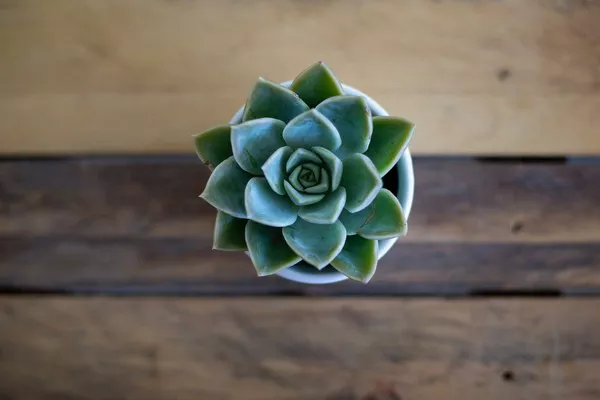Succulents, often associated with their fleshy and water-retentive leaves, have captivated gardeners and plant enthusiasts for centuries. These resilient desert plants are known for their ability to withstand harsh conditions with minimal water consumption. One of the most intriguing aspects of succulents is their capacity to produce stunning and vibrant flowers despite living in arid environments. In this article, we delve into the mysteries behind why succulents grow flowers and explore this fascinating phenomenon.
Survival of the Fittest: Evolutionary Significance of Flowers in Succulents
The emergence of flowers in succulents is a result of millions of years of evolution. In their native habitats, where resources are scarce and unpredictable, the ability to produce flowers offers significant survival advantages. The bright and colorful flowers serve as powerful attractants for pollinators such as bees, butterflies, and birds. By enticing these creatures, succulents ensure cross-pollination, which enhances genetic diversity and adaptability to environmental changes. Consequently, the evolution of flowers in succulents can be attributed to their need for efficient reproduction and propagation.
Triggering Factors for Flowering
Flowering in succulents is an intricate process influenced by various environmental and internal factors. Some key triggers include:
1. Photoperiod and Seasonal Cues: Succulents often rely on photoperiodism, where the length of day and night affects their flowering. Certain species require specific day lengths to initiate the flowering process, which usually coincides with particular seasons. The fluctuating day-night cycles in their natural habitats serve as reliable cues for flowering.
2. Water Availability: While succulents are adapted to drought, some species may require a specific amount of water to bloom. Adequate hydration signals a favorable period for reproduction, ensuring the survival of the species by increasing the chances of successful pollination and seed dispersal.
3. Temperature: Temperature plays a vital role in determining when a succulent will flower. Many species have evolved to flower during a specific temperature range that is optimal for pollinators’ activity, increasing the likelihood of successful fertilization.
4. Nutrient Availability: Sufficient nutrients are essential for flower development. Potassium, phosphorus, and nitrogen are especially crucial for supporting the energy-intensive process of flowering.
Adaptations for Flowering in Arid Conditions
1. Water Storage Mechanisms: One of the most distinguishing features of succulents is their ability to store water in their leaves, stems, or roots. This adaptation ensures a reservoir of moisture during periods of drought, allowing the plant to divert resources towards flowering when conditions are favorable.
2. CAM Photosynthesis: Many succulents employ Crassulacean Acid Metabolism (CAM) photosynthesis, an adaptation that allows them to open their stomata and take in carbon dioxide at night, reducing water loss through transpiration during the day. This water-saving mechanism supports flowering during challenging environmental conditions.
3. Drought Dormancy: Some succulent species exhibit drought dormancy, a state where they temporarily cease growth during extreme dry spells. This dormancy phase conserves energy until more favorable conditions return, including adequate water availability for flowering.
Asexual vs. Sexual Reproduction
1. Asexual Reproduction: In addition to sexual reproduction through flowers, succulents are renowned for their proficiency in asexual reproduction. Many species can produce new plants from stem or leaf cuttings, a process known as vegetative propagation. Asexual reproduction ensures genetic uniformity, allowing successful traits to persist in stable environments.
2. Sexual Reproduction: Flowers enable sexual reproduction in succulents, leading to genetic diversity, an invaluable asset in ever-changing desert ecosystems. Sexual reproduction creates unique combinations of genetic traits that enhance the species’ resilience and adaptability, increasing the likelihood of long-term survival.
Role of Pollinators: Mutualistic Relationships
1. Co-evolution with Pollinators: Over time, succulents have developed intricate relationships with their pollinators. These relationships have often co-evolved, with the plants developing specific floral structures, colors, and scents to attract their pollinators effectively. In return, pollinators receive nectar or pollen, which serves as a nutritious food source.
2. Importance of Biodiversity: The mutualistic bond between succulents and their pollinators is vital for the preservation of biodiversity. As succulents continue to thrive in arid regions, they provide essential habitats and nourishment for various pollinator species, supporting the entire ecosystem.
Conclusion
The remarkable ability of succulents to produce flowers in harsh and arid conditions is a testament to the power of adaptation and evolution. By understanding the triggers and mechanisms behind flowering in succulents, we gain insight into the delicate balance that sustains life in arid environments. The co-evolution of these desert plants with their pollinators further underscores the importance of preserving these unique and diverse ecosystems. As we continue to explore the wonders of the natural world, the enigma of why succulents grow flowers reminds us of the beauty and complexity of life on our planet.


